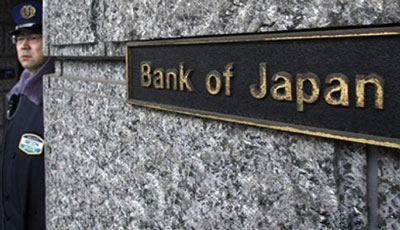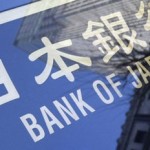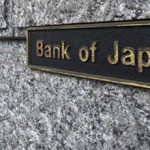BOJ: Statement on Monetary Policy

Bank of Japan:
1. At the Monetary Policy Meeting held today, the Policy Board of the Bank of Japan decided, by an 8-1 majority vote, to set the following guideline for money market operations for the intermeeting period: The Bank of Japan will conduct money market operations so that the monetary base will increase at an annual pace of about 80 trillion yen.
2. With regard to the asset purchases, the Bank decided, by an 8-1 majority vote, to continue with the following guidelines:
a) The Bank will purchase Japanese government bonds (JGBs) so that their amount outstanding will increase at an annual pace of about 80 trillion yen. With a view to encouraging a decline in interest rates across the entire yield curve, the Bank will conduct purchases in a flexible manner in accordance with financial market conditions. The average remaining maturity of the Bank’s JGB purchases will be about 7-10 years.
b) The Bank will purchase exchange-traded funds (ETFs) and Japan real estate investment trusts (J-REITs) so that their amounts outstanding will increase at annual paces of about 3 trillion yen and about 90 billion yen respectively.
c) As for CP and corporate bonds, the Bank will maintain their amounts outstanding at about 2.2 trillion yen and about 3.2 trillion yen respectively.
3. Japan’s economy has continued to recover moderately, although exports and production have been affected by the slowdown in emerging economies. Overseas economies — mainly advanced economies — have continued to grow at a moderate pace, despite the slowdown in emerging economies. Exports and industrial production have recently been more or less flat, due mainly to the effects of the slowdown in emerging economies. On the domestic demand side, business fixed investment has been on a moderate increasing trend as corporate profits have continued to improve markedly. Against the background of steady improvement in the employment and income situation, private consumption has been resilient and housing investment has been picking up. Public investment has entered a moderate declining trend, 2 although it remains at a high level. Meanwhile, business sentiment has generally stayed at a favorable level, although somewhat cautious developments have been observed in some areas. Financial conditions are accommodative. On the price front, the year-on-year rate of change in the consumer price index (CPI, all items less fresh food) is about 0 percent. Inflation expectations appear to be rising on the whole from a somewhat longer-term perspective.
4. With regard to the outlook, Japan’s economy is expected to continue recovering moderately. The year-on-year rate of change in the CPI is likely to be about 0 percent for the time being, due to the effects of the decline in energy prices.
5. Risks to the outlook include developments in the emerging and commodity-exporting economies, the prospects regarding the debt problem and the momentum of economic activity and prices in Europe, and the pace of recovery in the U.S. economy.
6. Quantitative and qualitative monetary easing (QQE) has been exerting its intended effects, and the Bank will continue with QQE, aiming to achieve the price stability target of 2 percent, as long as it is necessary for maintaining that target in a stable manner. It will examine both upside and downside risks to economic activity and prices, and make adjustments as appropriate.
Source: Bank of Japan (BOJ)




























